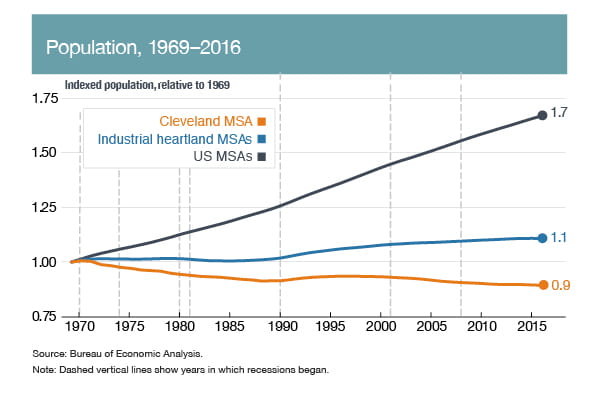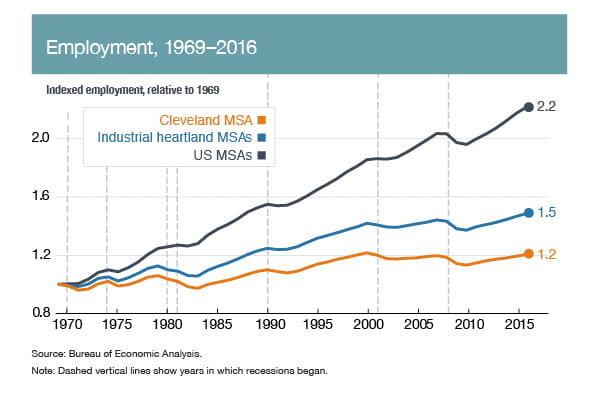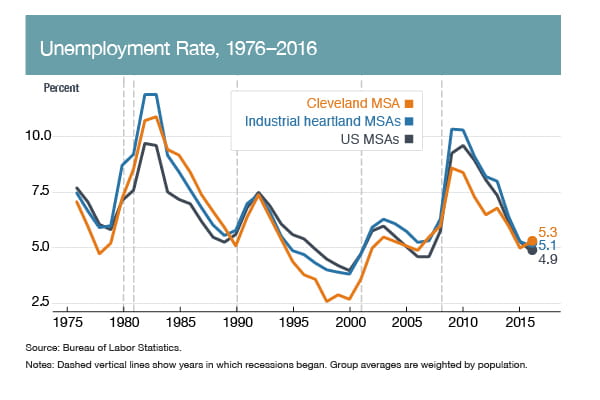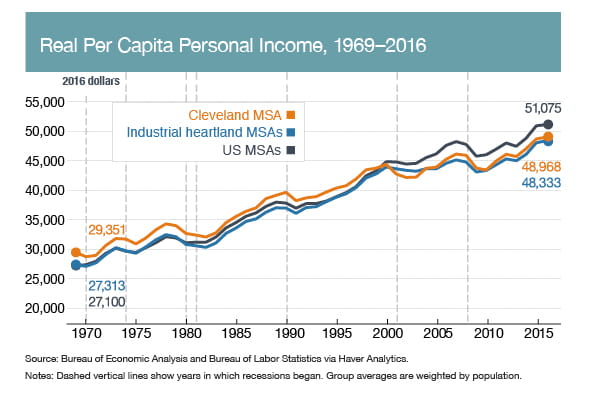- Share
Article
Rust and Renewal: A Cleveland Retrospective
This report examines the economic performance of the Cleveland metropolitan statistical area (MSA) from 1969 to 2016 in terms of employment, unemployment, population, and real per capita personal income levels. While comparisons are made to national averages, a more relevant peer group for the Cleveland MSA is that of the MSAs of the industrial heartland: areas located in and near the Midwest that, like Cleveland, also have historical concentrations in manufacturing. Even when the Cleveland MSA’s performance is compared to that of the other industrial heartland MSAs rather than to that of the nation, it is often somewhat weaker; however, the shared timing of adverse economic developments, including multiple shocks to manufacturing employment, points to the significant challenges faced by most industrial heartland MSAs.




The key results of this analysis on the Cleveland MSA’s economic performance are the following:
- Between 1969 and 2016, employment in the Cleveland MSA grew more than 20 percent. But this growth was much weaker than that in either the industrial heartland or the nation: The nation’s employment grew by more than 100 percent, and the average industrial heartland MSA saw its employment level grow by 50 percent.
- Despite the weak growth of employment in the Cleveland MSA, unemployment rates in the MSA have again declined to levels similar to national unemployment rates. The recovery in the Cleveland MSA’s unemployment rate happened following two large declines in manufacturing that affected the Cleveland MSA and the broader industrial heartland by sharply raising unemployment rates.
- The recovery of the unemployment rate in the Cleveland MSA occurred in spite of slower employment growth because population growth was significantly lower in the Cleveland MSA than in other US MSAs.
- In 1969, the Cleveland MSA was among the top 10 percent of MSAs for per capita income. Despite declines in per capita income following the large shocks to manufacturing employment experienced in the late 1970s and early 1980s, the Cleveland MSA’s per capita income remained above average until 2000. The decline in manufacturing experienced in the Cleveland MSA between 2001 and 2010 appears to have further dampened income growth; this which experience is consistent with the experience of other industrial heartland MSAs that suffered income losses along with manufacturing losses. The Cleveland MSA is now notably below the national MSA average for per capita income.
Download the complete Report | Download the Suppressed Data and Imputation Appendix




